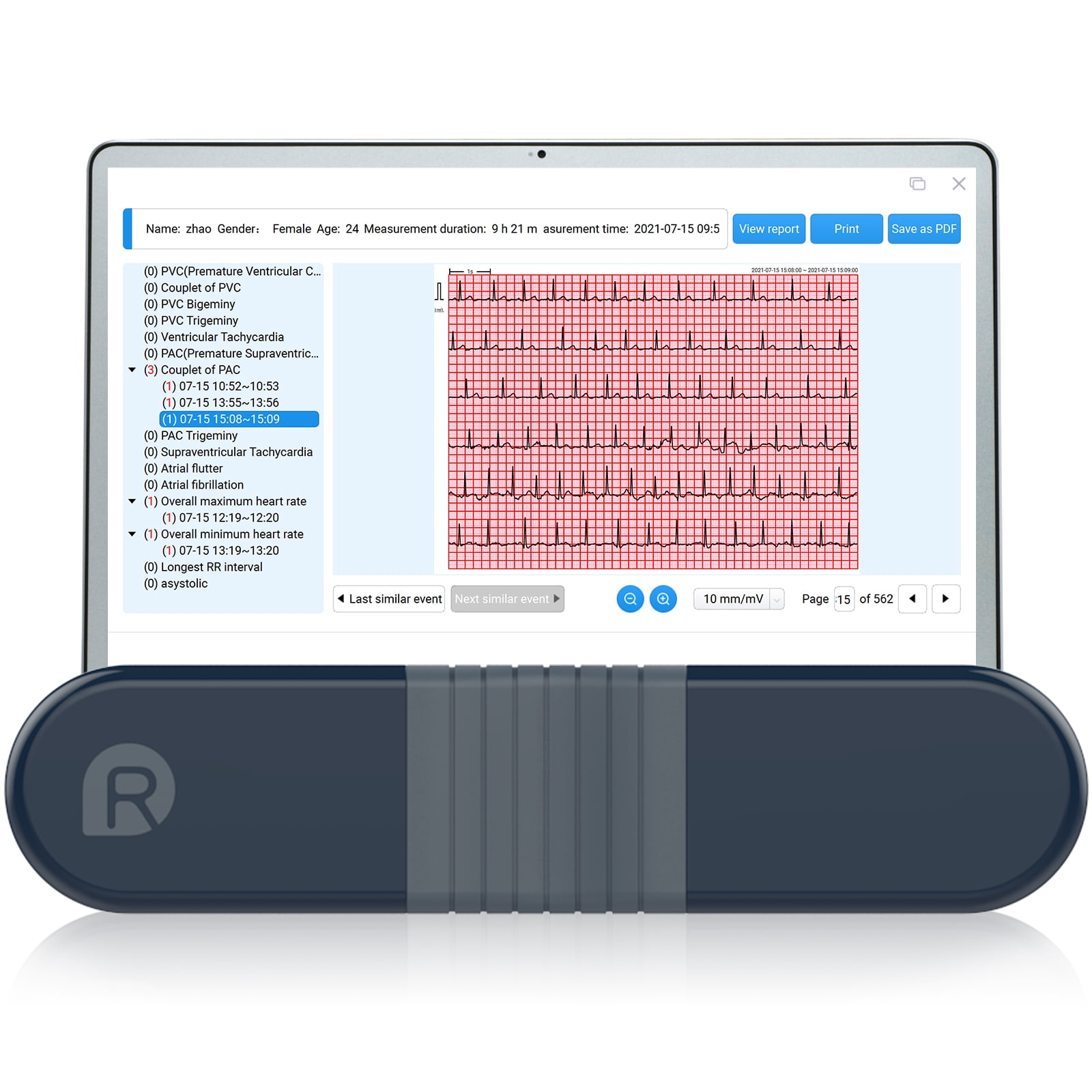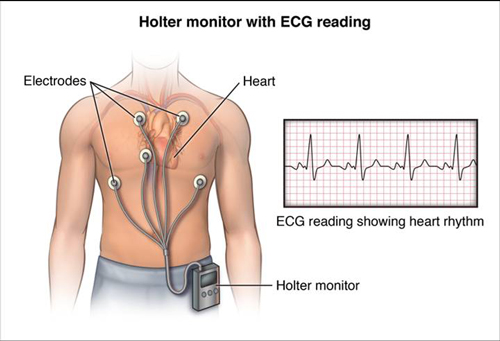

They are then attached by wires to a small recording monitor (see figure 1).
24 hrs heart monitor portable#
Also, keep away from cell phones and portable music players at least 6 inches from the monitor for the same reason.Įlectrodes that sense your heartbeats will be applied by sticking small conducting patches on the chest. However one should avoid being close to metal detectors, magnets, microwave oven, electric blankets, electric razors and toothbrushes while wearing the monitor device as these can interrupt the signal from the electrodes to the Holter monitor. Holter monitors are not usually affected by other electrical appliances.
24 hrs heart monitor skin#
There is no radiation and no side effects other than the possibility of skin irritation where the electrodes are placed on the chest and some inconvenience of carrying the device. There are no significant risks involved in wearing a Holter monitor device. As abnormal heart rhythms can come on and off, at any time of the day or night, the Holter monitor will allow the individual’s heart beat to be recorded over time.Īre there any risks to wearing a Holter monitor? A regular ECG can only allow the doctor to look at the heart’s activity at one point in time during the ECG recording (lasting a few seconds). It is usually done when an individual complains of palpitations, “skipped beats”, “jumped beats”, fast or slow fluttering of the heart or irregular heartbeats (arrhythmias) or unexpected fainting. Who requires to do a Holter monitor test? In other words, this small Holter device keeps track of your heart rate and rhythm and records your ECG as you go about your daily activities.Ī Holter monitor test is usually performed after a routine traditional test to check your heart rhythm (ECG) does not show up anything abnormal. Holter monitoring is used to determine how the heart responds to normal activity.A Holter monitor is a small, battery-operated, portable, wearable device that measures and tape records your heart beat (rhythm) through ECG (electrocardiography) continuously for 24 hours or longer depending on the type of monitoring device used. You should continue your normal activities while wearing the monitor. This may make sleeping difficult for some people. You must keep the monitor close to your body. However, some people may need to have their chest shaved so the electrodes can stick. You will not be able to do so while you are wearing a Holter monitor. Make sure you shower or bathe before you start the test. Tell your doctor if you are allergic to any tape or other adhesives.
24 hrs heart monitor how to#
You’ll be told how to replace the electrodes should they fall off or become loose.

There is no special preparation for the test. It is very important that you accurately record your symptoms and activities so that the doctor can match them with your holter monitor findings. The doctor will look at the records and see if there have been any irregular heart rhythms. After 24 – 48 hours, you return the monitor to your doctor’s office. You should keep a diary of what activities you do while wearing the monitor.

While you wear the monitor, it records your heart’s electrical activity.

You carry the holter monitor in a pocket or small pouch worn around your neck or waist. How the Test is PerformedĮlectrodes (small conducting patches) are stuck onto your chest and attached to a small recording monitor. Since the recording covers a 24 hours continuous basis, holter monitoring is much more likely to detect an abnormal heart rhythm when compared to the EKG. Since it can be worn during the patient’s regular daily activities, it helps the physician correlate symptoms of dizziness, palpitations or black outs. This records various electrical activity of the cardiovascular system for at least 24 hours. heart monitor is also known as a holter monitor.


 0 kommentar(er)
0 kommentar(er)
